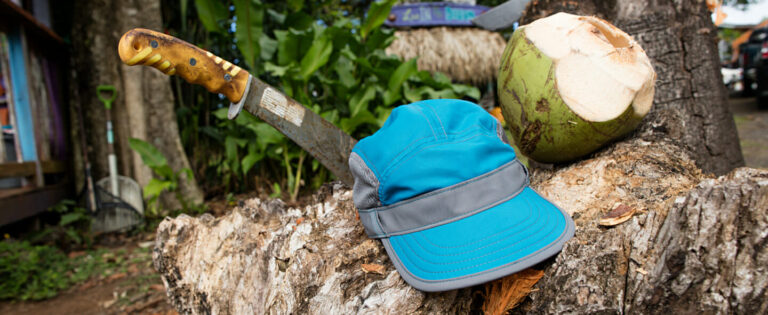Sometimes the best trips include some rough weather. Conquering a summit feels twice as good if you have made it through the elements. Modern equipment turns bad weather into something you can deal with. GORE-TEX footwear has really developed in recent years and should be a definite consideration as you piece together your kit. Wet feet really spoil any trip!
But, what about when you are back from your trip. The shoes are filthy and are in need of some TLC. Here, we pass on to you our notes from the last GORE-TEX training for Alpinetrek.
How GORE-TEX shoes work
If you would like to understand how GORE-TEX shoes work, it is good to be aware of the way it is made. When you understand the way in which the different layers interact, quite a few things will become clearer to you. The basic construction of the three types of GORE-shoes (GORE-TEX Extended Comfort, GORE-TEX Performance Comfort and GORE-TEX Insulated Comfort) is identical. I’ll explain it using GORE-TEX Performance Comfort shoes as an example.
Please note: GORE-TEX itself does not produce any shoes. This part is done by manufacturers such as Garmont, La Sportiva, Salewa, Scarpa, The North Face or Salomon, among others. GORE ‘only’ provides the expertise of how to develop and produce the membranes.
The GORE-TEX membrane is the third layer from the outside. It is below the upper material (such as leather) and a protective knit. Between your foot and the GORE-TEX is an insulation layer and the lining.
The membrane stops water from the outside from getting into the shoe. This means that the shoe is waterproof. At the same, however, sweat is transferred to the outside. Explanation: the size of the tiny drops that make up the moisture inside the shoe is significantly smaller than that of water drops. The framework of the membrane is constructed like a grid, through which the internal moisture can make its way to the outside. The much larger water drops, however, do not fit through. The two outer layers basically function to protect the membrane. Of course the outer material gives the shoe its look and significantly influences its breathability.
Cleaning and maintaining GORE-TEX shoes

In order to keep your shoes in good shape, you need to keep in mind that there is the upper material and the membrane. The membrane functions through its physical structure. Its place is between the other layers, which means you can’t actually reach it. So in fact, no special kind of treatment is required for it. And what’s more: according to GORE-TEX care products do not damage the membrane. No need for worrying.
When it comes to the upper material, GORE-TEX always refers to the care instructions of the manufacturers. They always include instructions on how to treat the material to give it the longest possible life span. Of course leather needs a different kind of maintenance than textile fabric. The fact that there is a GORE-TEX membrane two layers below the upper doesn’t have any impacts on this. But in any case, you can’t go wrong with removing the dirt from the outside layer of the shoes, using a piece of cloth or a brush and some lukewarm water. If you plan to recondition the dry treatment of the shoes, this is one of the absolutely necessary steps.
However, GORE-TEX recommends not to apply shoe polish with a fat or oil basis or special leather oils. Those do not damage the membrane (in fact you would have to rub in large amounts of oil very thoroughly to get through to the membrane). But they lessen the breathability of the outer material and clog the pores of the leather. For shoes with a membrane, however, this means that the outer material cannot transmit the vapor from the inner part of the shoes to the outside any longer. The moisture would be caught between the membrane and upper material.
But what happens when the shoes start to stink, are full of mud or simply no longer look quite presentable on the inside? Cleaning the inside of shoes (whether with or without GORE-TEX) is a matter of its own. The basic problem here is drying, which is absolutely necessary. But let’s start at the beginning. Washing shoes in the washing machine is an absolute no-go. This not only damages the materials, but also the structure and shape of the shoes. Depending on the degree of soiling, there are various ways to get to grips with the problem.
- Dirty shoes
When you’re in the great outdoors, it can happen that you literally collect half the forest in your shoes, accidentally step into a deep puddle of mud or somehow get dirt inside your shoes. It’s easy to deal with this kind of dirt. If possible, you should first remove the insole. If the insole is very dirty, it can easily be cleaned with a brush or lukewarm soapy water. If sand, soil and leaves or pine needles have collected in the shoes, it is important to shake them out well. If the inside of the shoes is really soiled, you can also use a small brush or a damp cloth to remove the dirt. The less water you use, the better it is for the shoes. For this reason, you should not let the shoes fill up with water or soak them in water. Once you have cleaned your shoes, it is important to dry them thoroughly before using them again. The easiest way to do this is to put the shoes in a warm place opened as wide open as possible. The inner sole needs to be dried outside the shoe. However, direct heat, such as from an oven or heater, can damage the shoes and should therefore be avoided. - Stinky shoes
If your shoes stink, you should thoroughly clean them. However, it is important to understand how odours develop in shoes. The stench in shoes or stinky feet does not come from the sweat itself, but from the bacteria that break down the sweat and dead skin particles. For this reason, you must try to get rid of the bacteria. With antibacterial care products, however, you can quickly get to grips with this problem and, what’s more, you won’t damage the GORE-TEX membrane. As a rule, this type of care product is a spray that is simply applied to the inside of the shoes. The build-up of odour in shoes can also be prevented by wearing socks that allow good moisture transport. It is also recommended to always dry shoes after use and store them in a well-ventilated place.
Here, the usual principle applies: Don’t panic. Everything is quite simple. No matter whether your shoe is a GORE-TEX shoe or not – the upper material should be treated according to the recommendations of the manufacturer. The only exception: using grease or oil to lubricate the pores of the upper material will decrease the overall breathability.
Dry treatment of GORE-TEX shoes
There is still one frequently asked question: how can I waterproof my shoes? If you read through this post, you already know the answer: No matter whether you used some waterproof treatment or not, GORE-TEX shoes are completely waterproof. The membrane does not get worn off, even when you wear the shoes on a regular basis.
Despite this, all shoes normally have a DWR treatment (Durable Water Repellent) in addition. This is applied to the upper material and makes its way into the fibres. Through the treatment you reduce the surface tension of the upper material. This means that water simply drops off the surface. The membrane will stop things from getting through the upper of the shoe, but the waterproof treatment has a number of advantages:
- Large drops of water bead and roll off the upper material because of the treatment.
- Along with the water, dirt won’t penetrate inside.
- Since no water is being absorbed by the outer layer, the shoes will not get waterlogged and become heavier.
- The upper material is normally a part of the insulation concept and works more efficiently if it stays dry.
- By preventing the shoes from absorbing water, you prevent the likelihood of water transferring through the materials which might result in moisture making its way into the shoe. A classic example is protruding lining material that sticks out of the collar.
Even though the name suggests it: DWR treatment does not stay waterproof forever. Wearing your shoes on a regular basis, natural degradation, dirt and detergents reduce the efficiency of the dry treatment. GORE-TEX shoes are still waterproof but the upper materials will absorb more and more water.
Bringing the water resistance of outer layers back to life is, however, very easy. There are a variety of treatment products, which you can apply in a minute. GORE-TEX does not recommend one particular manufacturer. All manufacturers offer very similar products – and the technologies have similar capabilities. The GORE-TEX team also point out that labels that say ‘…recommended for GORE-TEX…’ only indicate that the manufacturers – not GORE-TEX – suggest them.
We got only one recommendation from the GORE-TEX team: they see some advantages in using a waterproof treatment spray. While you actually need to soak the piece of clothing in some dry treatments, you can easily apply a spray to the outer layer. This way, you need a smaller amount of the treatment and the inner fabric does not receive an unnecessary amount of it.
Leather care for GORE-TEX shoes
Apart from waterproofing, it is especially important with leather shoes to care for the uppers properly. Leather that is heavily used but never treated appropriately can quickly become brittle or cracked. As already mentioned, in the case of a GORE-TEX membrane, you should not use grease or oil to make the leather supple again. It is better to use leather wax, which keeps the leather supple but does not clog the pores, unlike grease. Here’s a little tip: leather wax is best applied with bare hands (disposable gloves also work). The reason for this is body heat. This ensures that the wax becomes a little softer and can therefore be applied sparingly and evenly.








34 Comments on the Article
Hi i got, la sportiva tx5 gtx, and after cleaning like in instruction, water gets through, any ideas what should i do?
My new scarpa light hiking shoes are a combo of gortex and suede. How do I pretteat them before wearing being this combo. The company does not say. Thanks
Great, I have just got it. Thanks.
I am told that 'Hotter Shoes' Protector spray will stop my Goretex shoes from drying out. In your Post Comments you mention that protection is unnecessary as long as you keep the shoes clean so they can breath properly. Will this spray stop them from breathing properly?
My gortex Salamon walking shoes were submerged in very muddy water and are badly soiled inside and out. I have unsuccessfully attempted to clean them. Can I put them in the washing machine?
Hi. Have just bought a pair of gore tex leather boots from Hotter. I am not sure if one of the above reply comments says to actually spray with the Hotter product for these boot or not. Could you please clarify. Many thanks
Dorothy says she purchased a gore tex leather boot. Expert Marco says to apply wax. I thought in this article it previously said. Applying something like wax would stop sweat vapour from escaping, causing it to get trapped between the layers. Could you clarify please? Thank You. Rob.
Hi Marco, Some time ago, I purchased a pair of Dubarry country boots , lined with Goretex, and have treated the "upper material' with ordinary shoe polish - the uppers are conventional shoe leather i.e NOT NUBUCK. Through the process of time, the uppers have creased significantly along the area where I bend my feet, and in order to protect the upper leather more vigorously I have resorted to DUBBIN,in order particularly to repel water, thinking back to my boyhood days when we applied DUBBIN to our football boots. At about this time, my socks have begun to feel damp, and I have assumed that this the result of water penetration through the creased upper , and in turn through the GORETEX membrane. I have returned the boots to Dubarry, who would appear to assume that I have not looked after this footwear properly. Reading your post, it would now seem to me that in applying DUBBIN, I have been preventing vapour from the inner part of the boots from escaping, with the consequence that this vapour is in turn making my socks damp. Am I right in my own diagnosis, and if so can I prevent this in future by returning to a leather treatment to the uppers, thus allowing internal moisture to escape. Also, if the upper is creased to the degree of the leather slightly splitting, presumably the boots will still remain waterproof , because of the GORETEX lining. PLEASE ADVISE
Hi there, i recently purchased adidas terrex free hiker gtx. The right shoe seems to have an an/off stain of moisture on the part wherw i bend the shoe while walking. Water does not penetrate but the stain appears regularly and then after some time undee the sun it disappears. What should i do??
I recently purchased some Berghaus Hillwalker Goretex Leather walking boots. In the past I would have covered them in dubbin/wax. I have read your really helpful article and am now at a loss at what to do!!!! I appreciate I should not use the wax as it will impact on the breathability of the boots however surely the leather needs some sort of waterproofing!!!! Useful suggestions would really be helpful, thanks
Hello. I bought my second shoes reebok with gore tex membrane and they both wasn't waterproof, they neded just few splashes and they were wet inside... Are you sure they are completely waterproof? I bought second reebok because they were comfy not because of membrane but from my experience if I had a chance I would avoid goretex. Thanks for any explanation
I have fabric-topped Gore-Tex walking shoes (look like trainers) bought a few years ago which have always been faithfully dry. But this year they have started letting in the heavy rain. I tried a spray but it has not helped. Would it be ok to machine-wash the shoes in something like Nikwax TX.Direct Wash-in (which did wonders for my elderly Goretex lightweight jacket) ? Or any other suggestions gratefully received !
Hi, I have had a pair of nike gtx trail running shoes for 4 months that I use for daily walking shoes ( find them lighter than walking shoes)but my feet have got wet the last few times I have worn them in the morning with grass wet from the dew. Is this a manufacturing fault or should I have applied additional DWR after this amount of time? Thanks, Steph
Hi, I recently acquired some leather upper gore-tex boots which are in great external condition but smell quite bad. Do you have any recommendations on how to wash insides (considering the washing machine but not sure if this is a good idea)? Thanks Ben
I purchased North Face Gore-Tex boots but water is getting through, my friend bought the same ones and the same has happened to hers. We have been recommended Gore-Tex walking boots to guarantee dry feet but we are disappointed. Please can you help us?
I bought some Merrell Antona GTX trail shoes 2 months ago as Nordic walking shoes. They had a Gor-tex label attached ... and were great... until I got caught in torrential rain. Both my socks were wet mainly at the toes. I took them back to the shop who said that the fabric part of the shoe wasn’t deemed as waterproof and I should have sprayed them!! Any comments please.. she’s kept hold of them to sit them in water to test!! No money back offered, but they’re obviously not fit for purpose... from Brenda
Hi i want to ask you what about gore-tex and the snow? I had Salewa Trainer Lite Mid GTX and outside was the snow and I had wet fingers in boots. Need I use some spray? Thank you. M
Reading these comments saying gortex never leaks means that every pair of boots from any company I have bought have been faulty! In my experience, that in all gortex boots the gortex leaks at some point after a matter of months, and certainly no longer than a year. And yes I have proofed the outer fabric to try and reduce ingress of water.